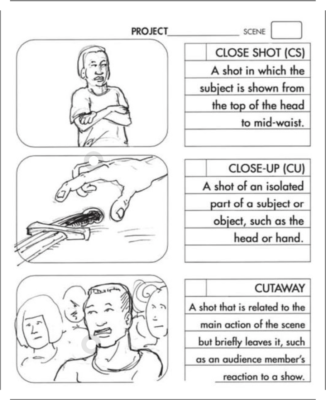Creating a storyboard for a no-budget film can seem like a daunting task, but it is an essential step in the pre-production process. A storyboard is a visual representation of the script, showing the sequence of shots, camera angles, and action in a film. It helps filmmakers to plan out the visual elements of their film and make sure that the final product matches their vision.
When creating a storyboard for a no-budget film, the first step is to read the script and break it down into individual scenes. This will help you to visualize the different shots that will be needed to tell the story.
Next, it’s important to consider the resources that will be available to you. Because you have a limited budget, it’s important to be creative in how you use the resources that you do have. For example, instead of using expensive special effects, you may want to use practical effects or use visual effects sparingly. Also, you need to make the most of your locations, using the same location for multiple scenes or using a location that can double as something else.
Once you have a clear understanding of the resources that will be available to you, it’s time to start sketching out the storyboard. You can use any medium you like, whether it be pencil and paper, or digital tools like Adobe Photoshop or Storyboard Pro. It’s important to keep in mind that a storyboard doesn’t have to be a work of art, it just needs to convey the necessary information.
When creating the storyboard, think about the different camera angles that will be used in each scene. This will help to create visual interest and keep the audience engaged. For example, you may want to use a wide shot to establish the location, followed by a close-up to capture the emotion on an actor’s face. You should also consider the movement of the camera. Will it be static or will it move? If it’s moving, what kind of movement will it be?
It’s also important to think about the lighting in each scene. Low-budget films often rely on natural light, so it’s important to think about the time of day and the weather conditions when planning out the shots. You can use the natural light to create mood and atmosphere in the film.
Once the storyboard is complete, it’s time to review it with the rest of the team. This is an important step in the process as it allows everyone to make sure that the storyboard matches their vision for the film. It’s also an opportunity to make any necessary adjustments or revisions before the filming begins.
In conclusion, creating a storyboard for a no-budget film is an essential step in the pre-production process. It allows filmmakers to plan out the visual elements of their film and make sure that the final product matches their vision. By considering the resources that will be available, being creative in how you use them, sketching out the storyboard and reviewing it with the rest of the team, you can create a storyboard that will serve as a guide for the filming process. Remember that a storyboard does not have to be a work of art, it just needs to convey the necessary information.
